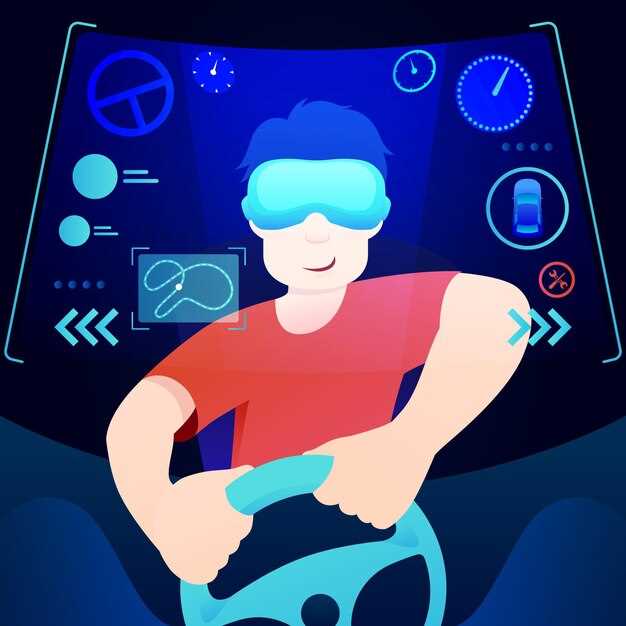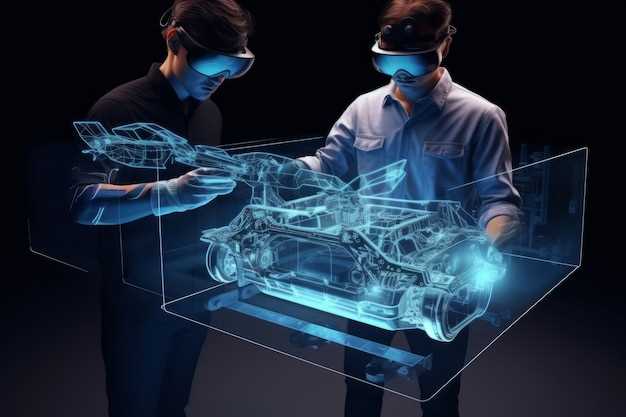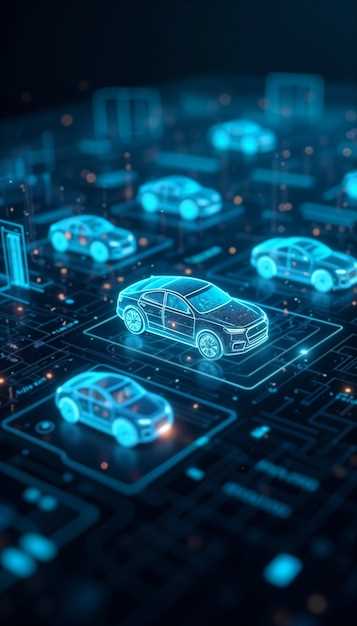
As the automotive industry shifts towards electrification and automation, the integration of cutting-edge tech is becoming increasingly vital. Augmented Reality (AR) stands out as one of the most promising innovations, poised to redefine how we interact with our vehicles. This transformative technology has the potential to enhance driving experiences by providing critical data directly in the driver’s field of vision, thereby improving safety and navigational efficiency.
The rise of electric vehicles (EV) further amplifies the importance of AR in modern cars. Manufacturers are exploring ways to merge digital information with the real-world environment, offering features such as adaptive navigation prompts and real-time diagnostics. As EV technology evolves, the synergy between electrification and AR can create a seamless user experience that maximizes the capabilities of both.
Looking ahead, the future of AR in vehicles is not just about enhancing existing features but also about paving the way for entirely new functionalities. From advanced heads-up displays to fully immersive infotainment systems, the potential applications are vast. As developers continue to innovate, we stand on the brink of a transportation revolution, where tech and mobility converge to create smarter, safer, and more engaging driving experiences.
Integrating Augmented Reality in Electric Vehicle Navigation Systems
As electric vehicles (EVs) continue to grow in popularity, the integration of augmented reality (AR) technology into navigation systems presents an exciting frontier in automotive innovation. By incorporating AR into the vehicle dashboard, manufacturers can enhance the driving experience, making navigation more intuitive and engaging for users.
The fusion of AR with existing navigation systems allows drivers to visualize directions directly on the windshield or dashboard display. This tech provides a seamless overlay of real-time data, such as traffic conditions, points of interest, and potential charging station locations. By displaying vital information in a contextually relevant manner, drivers can maintain their focus on the road while easily accessing navigation cues.
Further, AR can facilitate a more efficient energy consumption strategy for electric vehicles. By analyzing real-time data on traffic patterns and terrain, AR systems can suggest optimized routes that minimize battery usage. This feature not only extends the driving range of EVs but also empowers users with insights for smarter driving decisions.
The implementation of AR in EV navigation systems also opens doors for advanced features like predictive maintenance alerts and integration with smart city infrastructure. For instance, the dashboard could alert drivers to upcoming road hazards or maintenance needs, fostering a proactive approach to vehicle care. Moreover, connectivity to smart traffic signals and infrastructure can allow the vehicle to anticipate changes and adjust routes accordingly.
In summary, the integration of augmented reality in electric vehicle navigation systems transforms traditional driving into a more interactive and efficient experience. By leveraging cutting-edge tech, manufacturers can provide drivers with valuable insights, enhance route optimization, and ultimately redefine how users engage with their vehicles on the road.
Enhancing Driver Safety with AR Dashboards in Electric Vehicles

Augmented Reality (AR) technology is revolutionizing the driving experience, particularly in electric vehicles (EVs). AR dashboards integrate critical information directly into the driver’s line of sight, minimizing distractions and enhancing safety. These tech innovations provide real-time data, such as speed, navigation, and hazard alerts, in an intuitive format that allows drivers to maintain focus on the road ahead.
By replacing traditional dashboard displays with AR overlays, drivers can access essential information without looking away from the windshield. This feature significantly reduces the cognitive load on drivers, promoting safer driving habits. For instance, an AR dashboard can project navigation prompts directly onto the road, helping drivers follow directions more easily and accurately.
Additionally, AR technology enhances situational awareness by providing contextual information about surroundings, such as recognizing pedestrians, cyclists, and obstacles. This capability is crucial in urban environments where quick decision-making is vital. By alerting drivers to potential hazards in real time, AR dashboards can preemptively prevent collisions, contributing to overall road safety.
In electric vehicles, where silent operation can mask important auditory cues, AR dashboards facilitate a more informative driving experience. The integration of visual and auditory alerts allows drivers to stay engaged with their environment, ensuring they remain aware of potential dangers. Furthermore, AR can assist in energy management by advising on optimal driving speed and routes, promoting both safety and efficiency.
As the automotive industry continues to embrace electrification and automation, the combination of AR and advanced driver-assistance systems (ADAS) will play a pivotal role in shaping the future of driving. AR dashboards not only serve to enhance safety but also provide a glimpse into the potential for more connected, interactive, and user-friendly vehicle interfaces.
Future Trends: User Experience and Customization in AR for EVs

The integration of augmented reality (AR) technology in electric vehicles (EVs) is set to revolutionize the user experience by providing enhanced interactivity and personalization. With AR dashboards, drivers will experience a seamless blend of real-world navigation and digital information, making driving safer and more intuitive. This advancement promises to minimize distractions by overlaying critical data on the windshield, allowing users to keep their focus on the road.
Customization will play a pivotal role in the future of AR in EVs. Drivers will have the ability to tailor their AR dashboards according to their preferences, selecting from a range of themes, layouts, and information displays. This level of personalization will ensure that each user has a unique experience, reflective of their driving style and needs. For instance, performance-oriented users might prioritize metrics related to battery efficiency and driving range, while leisure drivers may prefer infotainment options.
As tech continues to evolve, we can expect to see smarter AR systems that utilize data analytics and artificial intelligence to adapt to user behavior. These systems could learn from driving patterns and suggest optimal routes or driving techniques, enhancing the overall experience. Furthermore, real-time updates and notifications can be integrated into the AR environment, ensuring that users receive timely information regarding road conditions, traffic, or charging station availability.
Future trends in AR for EVs also point towards collaborative functionalities, where vehicles can communicate with each other and the surrounding infrastructure. This could lead to an even more immersive user experience, where AR visualizations provide context-sensitive information about other vehicles or traffic signals, promoting safer and more intelligent driving.
In conclusion, the future of AR in electric vehicles is set to focus heavily on user experience and customization. By leveraging advanced technology, AR dashboards will transform how drivers interact with their vehicles, offering a more personalized, safe, and engaging driving experience.


